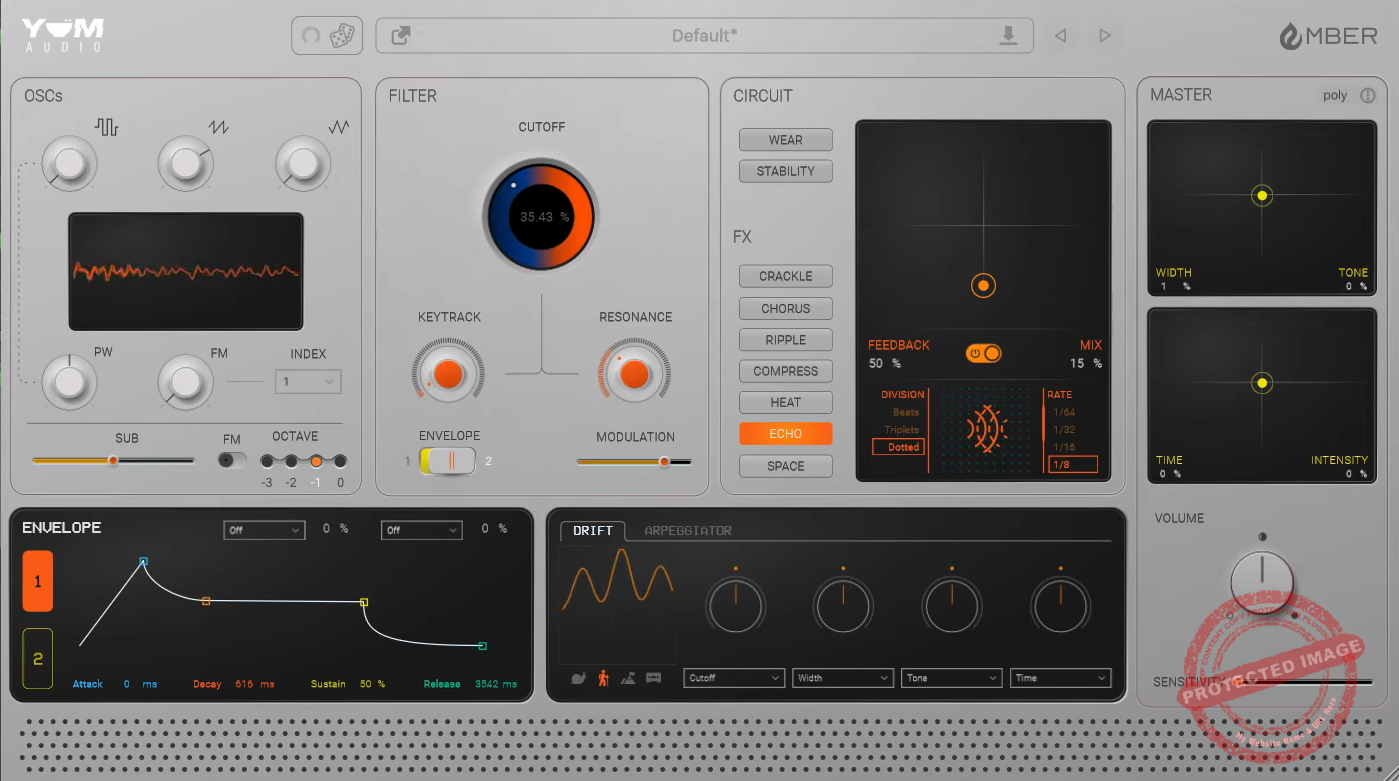Yum Audio has made a significant leap into the world of plugins today with its first synth plugin, Ember.
Ember is a synthesizer built on the principles of analog sound, delivering rich, vintage tones while maintaining simplicity and usability. Unlike traditional synthesizers with complex menus, Ember’s streamlined interface keeps all features accessible at a glance.
Now, why is it “vibe-driven?” It gives that warm, vintage feel with features like “wear and stability” controls that let you mess with imperfections to give your sounds that old-school analog soul. The interface is clean and simple and lets you focus on making music, not fighting menus.
Plus, with built-in goodies like vinyl crackle, lush reverbs, and tape saturation, you can call it a “vibe machine” for any genre. Whether you’re into dreamy pads or gritty basslines, Ember keeps the fun in sound design!
Yum Audio Ember’s Workflow & Interface
Ember’s workflow is as smooth as it sounds. You’ve got three oscillators at your fingertips, with a Waveform Selector that gives you access to square, saw, and triangle waveforms to sculpt your tone with precision. With its PWM (Pulse Width Modulation)-based workflow and FM Synthesis Capabilities, you can create a wide variety and versatile range of sounds.
You can also introduce harmonic complexity by increasing FM synthesis depth. Further, the keytrack-based cutoff filter keeps things dynamic, letting your filter settings respond to your playing, which adds a super expressive touch. With its X/Y pad, you can tweak feedback, mix, rate, and time all in one intuitive spot, with no endless knob-twisting here!
On the FX side, Ember brings the heat with options like Crackle (for vinyl vibes), Ripple, Compress, Heat, Chorus, Echo, and the spacious Reverb under “Space.”
For those vintage synth-heads, the Circuit section lets you adjust wear and stability to add just the right amount of analog chaos.
Want more control? Ember’s got two envelopes to shape, attack, sustain, decay, and release however you want. Add in the drift function to sprinkle in some pitch imperfections and a built-in arpeggiator with a very unique and expansive workflow that lets you create interesting patterns with adjustable time, rhythm, pattern, and a unique control called ‘Chance’ to introduce more randomness in your sound.
Finally, there are the Master X/Y Pads: one for dialing in tone and width, and the other for controlling time and intensity globally. It’s all about making your sound rich, wide, and well-tailored to your “vibe.”
Designed for Ease of Use
Ember’s minimalistic yet powerful interface ensures accessibility for both beginners and experienced synth users. The plugin’s drag-and-drop functionality for selecting presets and parameters makes navigating its capabilities a breeze.
The arpeggiator also enhances creativity, allowing users to create rhythmic patterns effortlessly. With various modes like up, down, random, and shuffle, the arpeggiator can sync to your DAW’s tempo, unlocking dynamic rhythmic possibilities.
Explore a Wide Array of Presets
With around 200 presets, Ember offers a curated library of presets across multiple categories:
- Bass: Punchy, deep tones ideal for modern genres like EDM, hip-hop, and house.
- Leads and Pads: From soaring leads to ethereal pads, Ember covers a wide tonal range.
- Keys and Brass: Retro-inspired keyboard tones and warm, analog brass sounds.
- Effects and Arpeggiated Sounds: Unique textures and rhythmic sequences for adding character to tracks.


